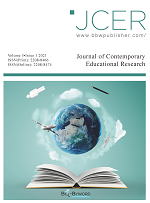Ways to Cultivate Students’ Innovative Thinking in the Teaching of Oil Painting in Colleges
Abstract
With the rapid development of information technology, oil painting, as an important part of art culture, plays an important role in foreign exchanges and the promotion of multicultural development. College education bears the responsibility of providing a steady stream of high-quality talents for the development of social culture and art in addition to bringing new vitality for the dissemination and development of art and cultural theories. Giving full play to the role of oil painting teaching in colleges to cultivate oil painting talents has become one of the top priorities. Therefore, colleges and universities should continue to promote the development and reform of oil painting teaching as well as better improve the overall quality and oil painting skills among college students. In the new era, innovative thinking is an indispensable core quality in students’ learning and life. In contemporary oil painting teaching in colleges and universities, it is very important to cultivate students’ innovative thinking ability. This article begins by discussing the development of oil painting in China and the characteristics of students’ innovative thinking, analyzes the importance of cultivating students’ innovative thinking, as well as explores effective ways to cultivate their innovative thinking in regard to oil painting.
References
Wang F, 2013, Research on the Cultivation of College Students’ Innovative Thinking in University Oil Painting Teaching. Art Education Research, (22): 106.
Xu Z, 2016, How to Effectively Cultivate Students’ Innovative Thinking in College Oil Painting Teaching. Contemporary Educational Practice and Teaching Research, (07): 111.
Zhang Z, 2017, How to Effectively Cultivate Students’ Innovative Thinking in College Oil Painting Teaching. Art Education Research, (20): 140.
Wang Y, 2017, Discussion on Innovative Ways to Improve the Self-Learning Ability of College Students. Small and Medium Enterprise Management and Technology, (1): 100-101.
Liu X, Wang L, 2017, Research on the Cultivation of College Students’ Innovative Thinking. Innovation and Entrepreneurship Education, (3): 24-26.

